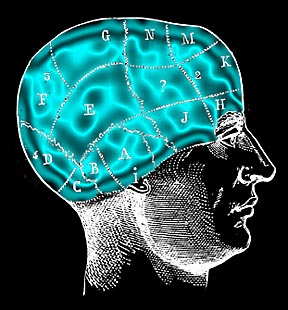
Think of a board meeting where a CEO discussing about the expect target for the next year. While he was talking about the target he found that project leader’s facial expression is not so good or no longer agree with him. So the CEO during the meeting keeps on asking him that “are you comfortable with this target”. The project leader told him that he can do it but the CEO was not sure about him thereafter he arranged a special meeting with the project leader and ask him whether you are comfortable with the new target. In the end of the year the project manager has managed to get the targeted profit of the organization. So the CEO has wasted his time as well as his project manager’s time. It’s a real story. With the help of this story we can say even the very experienced people can’t guess about the mind of the operatives by just look into their face, because body language can be misleading and because facial expressions can be hard to read if you're not practiced at it.
Accurately interpreting the meanings of nonverbal communications, especially facial expressions, can make CEOs more effective leaders and managers, says Paul Ekman, noted psychologist and author of Emotions Revealed: Recognizing Faces and Feelings to Improve Communication and Emotional Life. Reading facial expressions is a particularly useful skill for business executives because, so often in business settings, people don't say what they really think. If CEOs could recognize how different emotions manifest themselves on the face, they'd be able to discern much more quickly, for example, when an individual is starting to get angry. They'd also be able to identify when people are trying to conceal their emotions—such as fear, contempt, disgust or surprise. This knowledge and ability can make CEOs more aware of unspoken political tensions in board or executive committee meetings. It also better equips them to handle sensitive staffing situations such as performance reviews. Ekman points to research indicating that managers who seem responsive to the unspoken emotions of their staffs are more successful in the workplace than managers who don't.
“So much of our job [as CEOs] is spent selling things—ideas, budgets, influence. Becoming sensitive to the meanings of facial expressions, while tricky, is a way to find out very quickly who's allied with you and who might be angry with something you said," says Goldfarb a leading CEO in United States.
While facial expressions can be hard to decipher because they're fleeting (lasting anywhere from less than one-half of a second to three seconds) and because people often try to conceal them, they are in fact the clearest indicator of what someone is feeling. The face is the only system that will tell us the specific emotion that's occurring," he says. That's because each emotion has unique, identifiable signals in the face. Emotions manifest themselves in facial expressions because; it became useful over the course of human evolution to let others know when we sense danger. Facial expressions have since become automatic. Because each emotion has unique signals in the face, facial expressions are more reliable indicators of a person's emotional state than body language.
For example, if you pick up on signs of anger (thinned lips, lowered eyebrows, and raised upper eyelids) when telling a staff member that she did not get a promotion, and if you care about the staff member and want to see her advance, Ekman suggests that you might say to her, "I know that was bad news and I expect it was disappointing. I had the impression you were upset and wondered if it would help to talk about it," or simply, "I would be glad to talk to you now or at a later time about how you feel about it." Ekman cautions against asking a person in this situation if she is angry because it opens the CIO up to an attack.
In the other hand it’s better to let the sub ordinates to read the mind of the CEO. It’ll enable the understanding between CEO and operatives. In essence, managers and employees must become mind readers. The better they understand the challenges that the boss faces, the better they can supply the information needed to cope with them. The role of the executive in this process of mind reading is to make it as easy as possible for subordinates to read his or her mind, allowing subordinates to be proactive about anticipating the effects of their actions. The act of mind reading in business is a two-way process, with both the boss and the subordinate participating.
In some instance it’s very difficult to asses the cues in the face or even the body language. Think of an instance where CEO is a Sri Lankan and rest of the operatives are Americans. Place to place facial expression and body language can differ. So definitely the Sri Lankan CEO won’t be able to guess the facial expressions or the body language of the American operatives.
If the staff member shows fear (raised upper eyelids, tensed lower eyelids, with eyebrows raised and drawn together), her expression may suggest that she is concerned about her future. Psychologists advises supervisors to reassure the person about her standing in the company if it's not at risk, or to discuss the areas in which the individual needs to improve.
Psychologists says that, while studying facial expressions, it's important to keep in mind that they do not reveal what is generating the emotion, only that the emotion is occurring. Yet, he continues, "If we are sensitive to the expressions of another person, then we know what impact we're having on them and what emotion they might be trying to conceal." In other words, we're a lot better off when we pay attention to and know how to assess these cues than when we're oblivious to them.
1 comment:
Nice content man!!!
Post a Comment